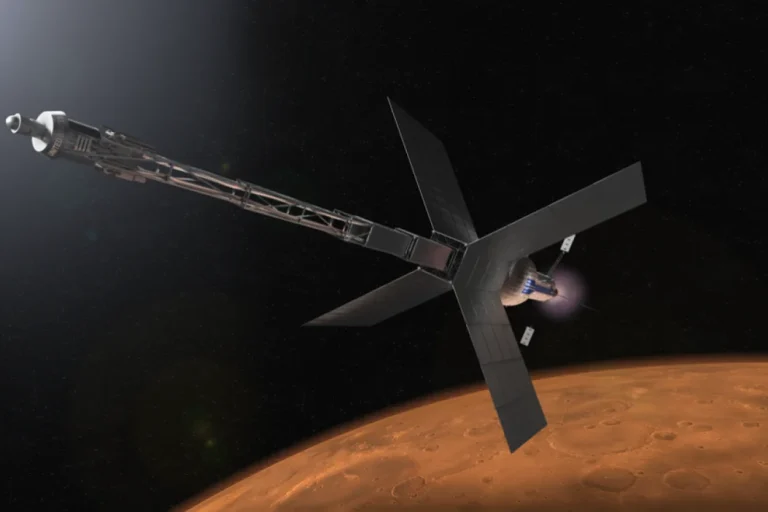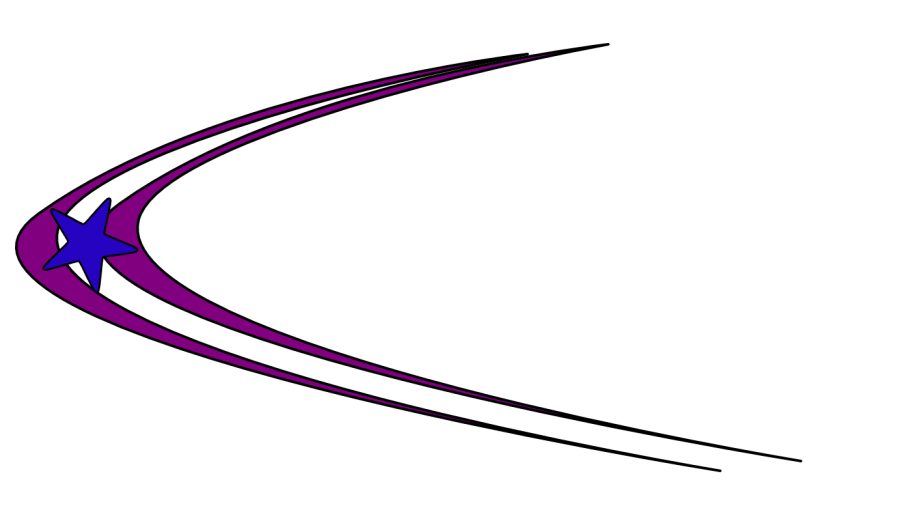Our Services
At ISE we know Radiation
Space radiation analysis and protection requires expert and in-depth knowledge.
Radiation can wreak havoc and even cause entire space missions to fail mainly by causing critical communications systems to malfunction and/or fail. To achieve a successful space mission, be it crewed or non-crewed, pre-mission preliminary characterizations and in-depth studies of the radiation environments to be encountered must be performed, this in turn may affect selection of avionics etc. In unmanned missions, active analyses of the components in the electronics are critical to predict the level of success for the mission which will derive operational concepts and return-of-investment expectations.
ISE Expert space radiation services for human missions, unmanned missions, satellites, and comprehensive mission support. Our team specializes in radiation analysis, radiation shielding design, and dosimetry projections to optimize space mission safety and sucess. By integrating space weather impact assessments and satellite radiation studies, we enhance radiation risk mitigation strategies, contributing significantly to space mission success. Trust our space radiation experts for all your radiation mission planning and protection needs.

HUMAN MISSIONS
ISE provides comprehensive and critical mission radiation analysis that will help prepare and mitigate potential radiation risks including acute radiation risks to the crew, adhering to NASA human safety standards and recommendations.
Tailored Mission Radiation Analysis to Monitor Crew and Passenger Exposure:
- Mission design for radiation protection adhering to NASA recommended safety standards
- Pre-Mission Dosimetry Projections
- Personal Dosimetry for Pilots, Crew, and Passengers support.
- Spacecraft radiation support design requirements
- Spacesuit design support for enhanced radiation protection
Planetary missions: Moon, Mars & beyond
- Habitats radiation protection design support
- Pressurized rovers design for radiation protection
CONOPS: development of the concept of operations for surface stay planetary missions to adhere to NASA recommended safety radiation exposure limits to humans.

UNMANNED MISSIONS
Space radiation is one of the most complex risks encountered by space missions. The space Radiation environment can have serious effects on spacecraft electronics. For example, single event effects or SEE, Single event effects are a source of error in spacecraft microelectronics caused by the passage of high-energy charged particles such as cosmic rays. These one- or few-bit errors may cause data loss or system malfunctions without any permanent damage to the device.
ISE testing capability will ensure that the appropriate testing campaigns which will impact component selection (critical when making use of CTOS components) specially at the beginning of the mission definition phases as well as a performing appropriate radiation analysis to understand potential failure modes during the mission are performed in order to better manage risks and avoid catastrophic losses.
- Radiation Mission Risk & Safety Analysis:
- Spacecraft Design Support for Radiation Shielding
- Safety and Countermeasures design
- Orbit optimization design studies from the radiation perspective
- Technical lead system engineering
- Test plan definition
- EMC analysis
- FMECA analysis
- Thermal analysis and design
- Mechanical analysis and design
- Electronics architectures and design
- Scientific Payloads/support
- Precision Landing systems
- Test facilities support

SATELLITES
ISE has a core expertise in Satellite Systems
Modern satellite systems will be much more vulnerable to space weather (space radiation)
As we already start solar cycle 25 and with the increasing number of satellites around the Earth condensing space plus the ever increasing reliance on GPS navigation systems which can be disrupted by space radiation. In addition, the ever decreasing size of the electronic components, is causing a higher vulnerability to even single particle hit event effects which can seriously disrupt operations causing potential great economic losses. It is critical then to ensure that the appropriate testing campaigns which will impact component selection (critical when making use of CTOS components) specially at the beginning of the mission definition phases as well as a performing appropriate radiation analysis to understand potential failure modes during the mission are performed in order to better manage risks and avoid catastrophic losses and potential legal lawsuits.
Radiation Protection & Simulation studies: electronics/avionics (including COTS)
Satellite Systems/Constellations, Spacecraft & other Space Systems
- Mission Critical Electronics
- Calculation & Analysis of Single Event Upsets
- Latch-ups, Burnouts
- Gate Ruptures (and similar events for a Variety of Unmanned Mission Scenarios)
- Radiation analyses of electronics designs and characterization of radiation with protons and heavy ion testing at Cyclotrons and accelerators in the US and Canada.
- Radiation requirements derivation from mission profile
- Spacecraft electronics/avionics/payload design and development
Data/time synchronization for the data science and/or big data analysis to achieve temporal coherence
Collison avoidance with the rest of the satellites within the constellation or with other constellations
- Radiation Protection & Simulation studies: electronics/avionics (including COTS)
- Mission Critical Electronics (Satellites, Spacecraft & other space systems)
- Calculation & Analysis of Single Event Upsets
- Latch-ups, Burnouts
- Gate Ruptures (and similar events for a Variety of Unmanned Mission Scenarios)
- Radiation analyses of electronics design and characterization of radiation with protons and heavy ion testing at Cyclotrons and accelerators in the US and Canada.
- Radiation requirements derivation from mission profile
- Spacecraft electronics/avionics/payload design and development
- Qualification testing and EMI/EMC test services for individual electronics subsystems
- Prototype and qual systems build (without clean room)
- Spacecraft level testing and qualification
- Thermal and vibration analyses based on mechanical 3D models
- MTBF, Derating and other system analyses for electronic subsystems
- Modeling in state of the art SOA radiation modeling tools and proprietary modeling tools.
- Overall mission support to client
- Mission Critical Electronics (Satellites, Spacecraft & other space systems)

Nuclear Propulsion Systems (NTP or NEP)
Space nuclear reactor systems Nuclear Thermal Propulsion) or Nuclear Electric Propulsion) are more and more considered as a possible propulsion means for deep space missions due to the fact that they would greatly shorten mission transit times and duration with their consequent benefits. Space nuclear propulsion systems a quite complex and as they use nuclear fuels they emit radiation. Each of them has its own unique radiation spectrum depending on its design type, fuel, and other parameters. These radiation fields can negatively affect both on board electronics as well as humans in human crewed missions.
The challenge becomes how to properly shield both the on-board electronics/avionics and the human crews. In the case where no shield or a badly designed shield is provided, the consequences can be negative as the radiation can provoke electronics malfunctioning as well as health effects on the crews. In a worst-case scenario these effects would be those associated with radiation sickness which would negatively impact mission operations.
This is obviously then a critical issue to be address as early as possible and best within then mission definition phases as it may impact many aspects of the spacecraft (which includes its propulsion system. aka nuclear). It is not something that in many cases is wrongly thought to be assessed as the last item, as then it’s truly too late, especially when it is realized that the added required shielding will add prohibitive launch mass to the whole spacecraft.
At ISE Radiation Experts we have the expertise to tackle these challenges, and can provide detailed radiation analysis with the state-of-the-art computer simulation codes and the ensuing expert analyst and best recommendations.

Space Habitat Design
Space radiation is a critical challenge which must be tackled as early as possible and ideally at the preliminary definition phases of a mission so that the adequate shielding and radiation protection measure can be included within the mission.
Crewed space missions to the Earth´s orbit, deep space hubs and planetary surface destinations must carefully consider the design of their habitats where the human crews will be living. Thorough radiation analysis and the integration of an adequate radiation shielding within the habitat’s designs are paramount for crews’ safety and optimal mission success.
A smart shielding design will minimize launch mass and therein save on mission’s costs in addition to optimize safety and mission success. Tradeoff studies to arrive at optimal smart shielding configurations will take dedicated expertise which we can provide at ISE Radiation Experts.
Necesitamos su consentimiento para cargar las traducciones
Utilizamos un servicio de terceros para traducir el contenido del sitio web que puede recopilar datos sobre su actividad. Por favor revise los detalles en la política de privacidad y acepte el servicio para ver las traducciones.

